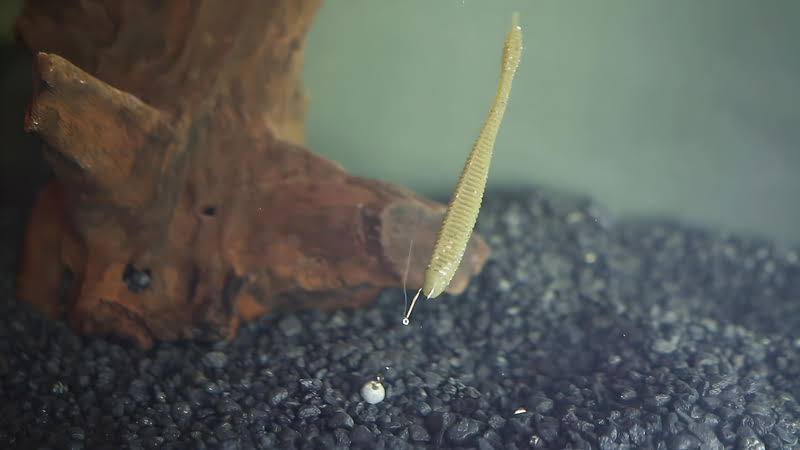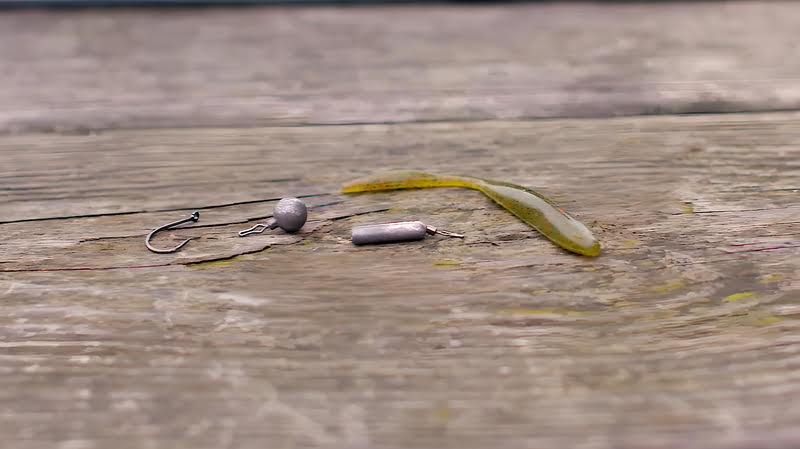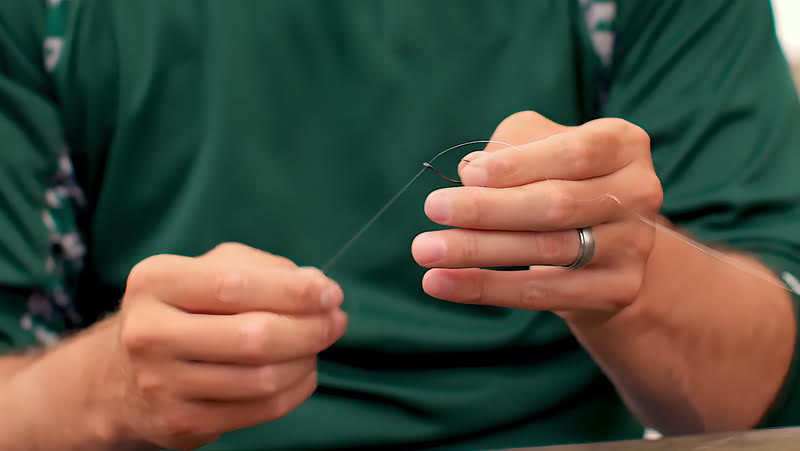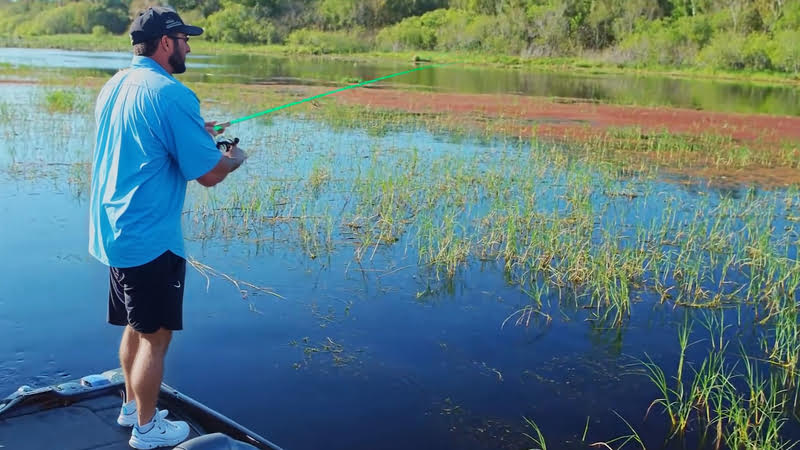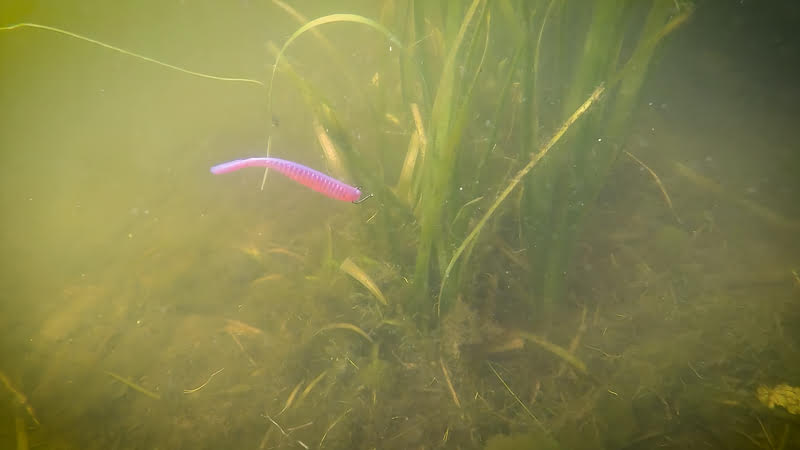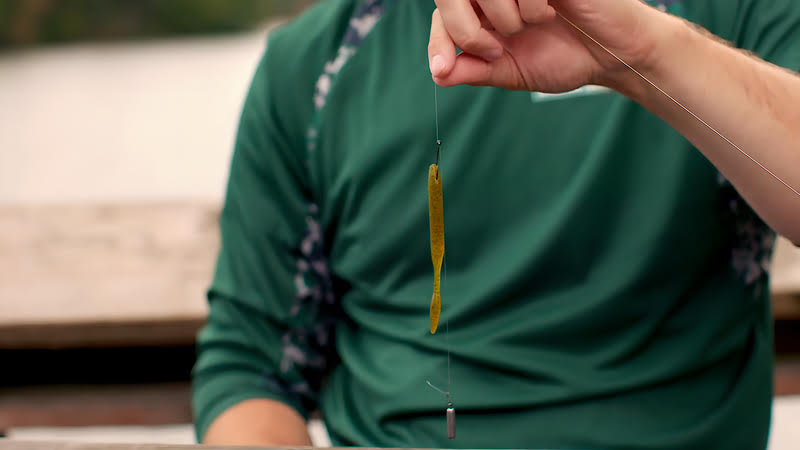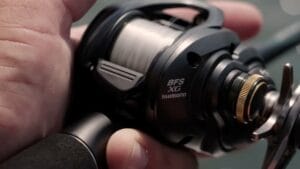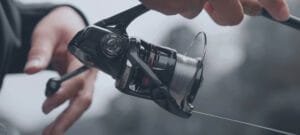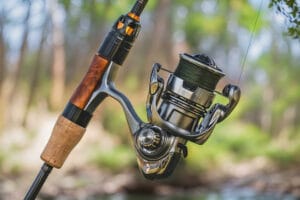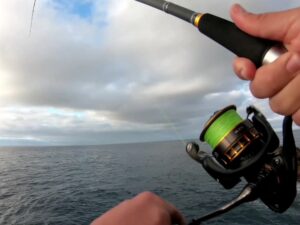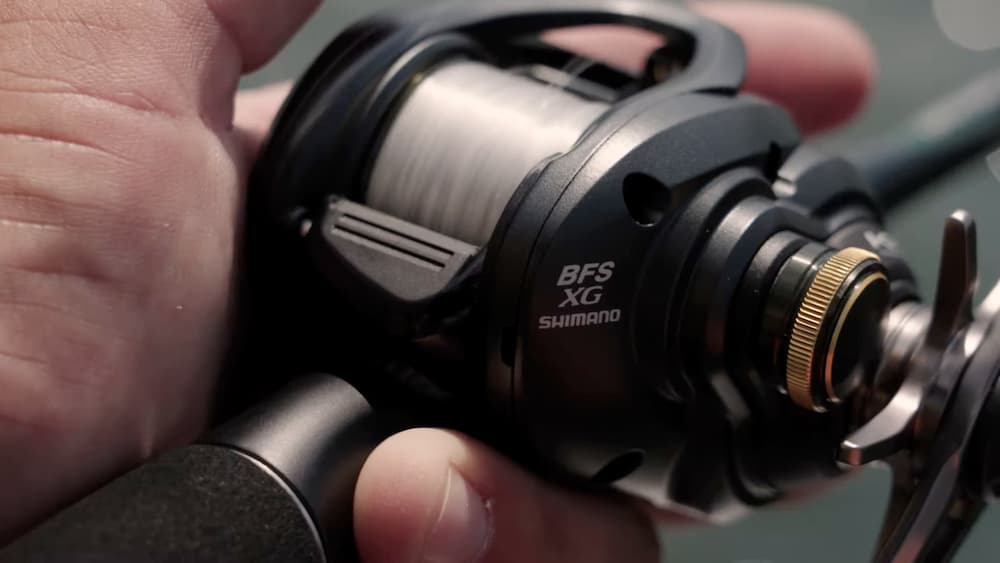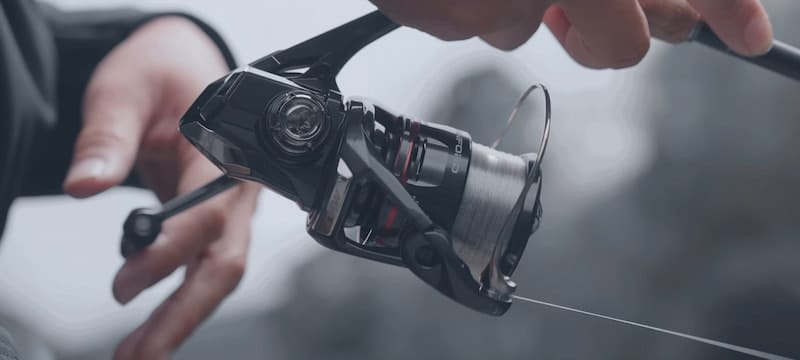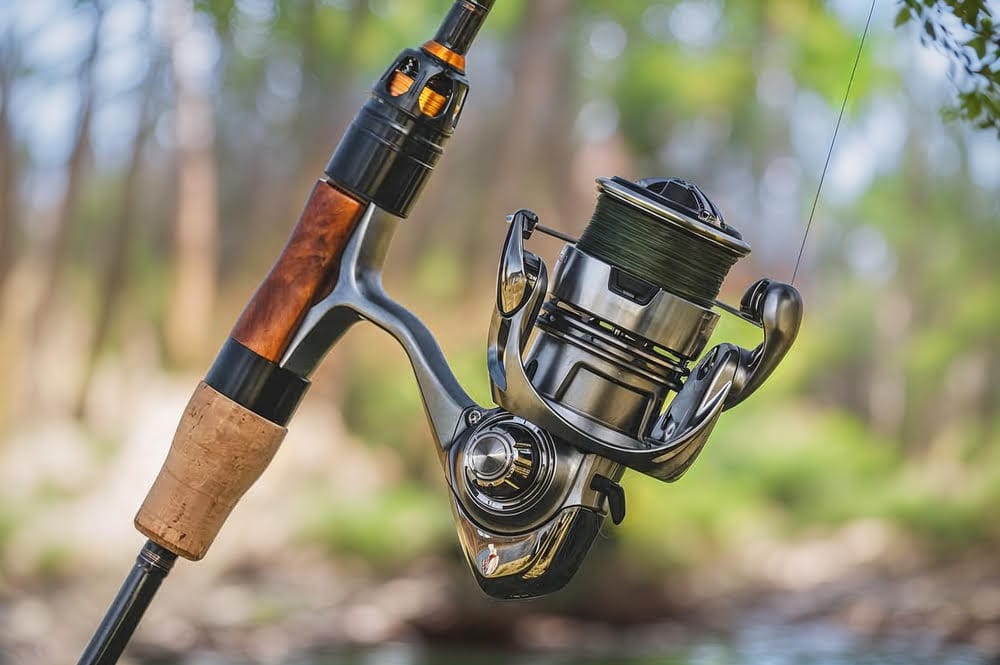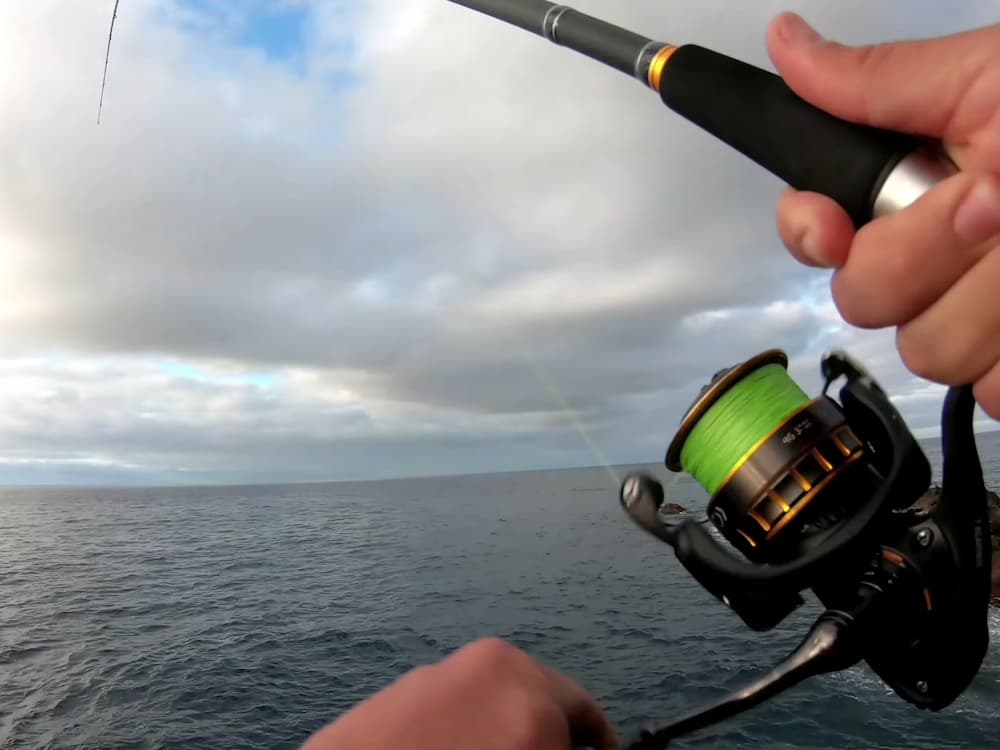Mastering the art of drop shot fishing means changing your approach for the different water conditions you come across.
Whether crystal clear or muddy waters, optimizing your setup and technique can make all the difference.
Let’s explore in-depth how you can get the most out of your drop shot rig based on the water clarity situation.
Drop Shotting for Clear Water
When you’re blessed with super clear water, your dropshot rig will really work well.
But you’ll need to take some specific steps to deal with the wariness of bass in see-through waters.
Your bait choice is critical – natural, see-through soft plastics are the way to go.
Creature baits and worms in very pale, dull shades work great here.
The transparent, subtle effect helps them blend into the background, avoiding alarming the cautious bass.
Also consider non-scented baits.
Bass mostly use their eyesight in clear water, so strong smells can make an otherwise invisible bait suddenly noticeable.
To further prevent visibility issues, use light line in the 6-8 lb test range.
Fluorocarbon is the top choice because it’s harder to see than other lines underwater.
A braided mainline with a fluorocarbon leader provides a good mix of strength and invisibility.
With clear water, stealth and finesse are your winning tactics.
You want to keep things extremely subtle and natural to get picky bass to bite. Use ultra-light wire hooks that won’t alarm fish when you set the hook.
Weights should be on the lighter side too, just enough to reach where the fish are.
Your presentation and retrieve are also key.
Super slow, hesitant movements allow the bait to copy vulnerable prey while avoiding any commotion that could scare fish.
Pausing the bait completely still at times can also get curious strikes.
By matching the hatch with see-through baits, reducing visibility, and delicately presenting your bait, drop shotting in clear waters can help convince even the most tight-lipped bass to bite.
Drop Shotting for Muck-Covered Water Bottoms
Now let’s switch gears to fishing in the opposite conditions – murky, muck-filled waters where you can’t see very far.
Here, bass mostly use their sense of touch and smell rather than sight.
To appeal to their senses, use scented plastics or live bait like minnows on your drop shot rig.
This increases the bait’s appeal through both vibration and scent in the dingy water.
Your retrieve approach is also key.
Very slow, purposeful movements allow the maximum odor release from your scented bait to trigger the bass’s keen sense of smell and sensitivity to vibrations.
You can also choose bright, contrasting colors for your plastic baits – these will stand out as clear targets for bass where they can’t see far.
Whites, chartreuses, oranges, and other loud colors work very well.
In dirty water, you can get away with slightly heavier line and hooks than you’d use in clear conditions.
This allows you to pull fish out of cover more easily once they strike.
Relying on vibration, scent and visibility factors when drop shotting muddy waters will help you get bass to bite despite the fishing challenges these conditions present.
By optimizing your bass rig and tactics for different water clarity scenarios, you’ll become a versatile drop shot angler capable of tempting bass regardless of the conditions you come across.

